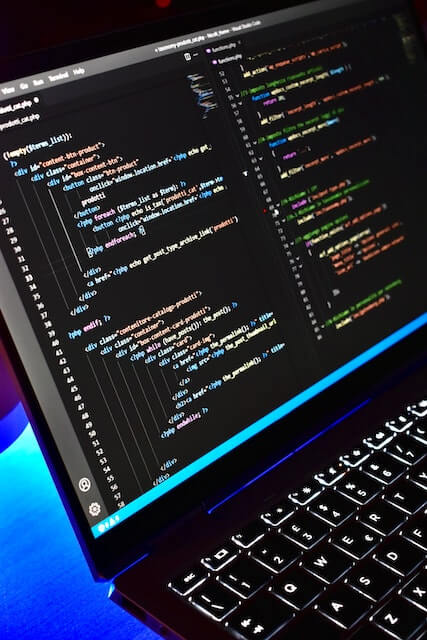
What Is an R&D Team? Roles, Structure, and How to Build One

What is an R&D team in the modern world? It’s a group of professionals focused on developing innovative solutions, typically requiring resolving complex issues and long-term investment. An R&D team can bring businesses many competitive advantages and help them establish solid market positioning.
Managing R&D teams effectively fosters a culture of creativity, resulting in positive outcomes. However, leading a high-performing R&D center requires unique skills and strategies. In this article, we delve into best practices for managing R&D teams. We’ll cover aspects from building the right team to fostering an innovative culture, aligning projects with strategic goals, and ensuring efficient resource utilization. Let’s begin!
What is an R&D team?

An R&D team is a specialized team focused on researching new technologies, ideation, and creating new solutions or improving existing ones. The main part of the research and development teams’ agenda is exploring possibilities and pushing the boundaries of technologies while creatively overcoming challenges. Thus, addressing the question “What is R&D team” and its purpose, these teams are essential for creating potentially groundbreaking solutions that can help businesses stay ahead of the competition, refine their products or services, and pave the path for long-term growth and success.
Key roles and responsibilities in an R&D team
People are at the heart of any successful R&D unit. Building the right team involves a process of selecting individuals who not only possess the necessary technical skills but also fit well within the team’s culture and dynamics. With that in mind, you must clearly define the roles and responsibilities required for your R&D projects. Let’s review typical research and development team roles and responsibilities so you can see where to start and who to hire.

Chief Innovation Officer (CINO). From laying the groundwork for innovation to managing innovation-related processes, it plays a key role in R&D. Here are the key responsibilities of CINO:
- Establishing processes for managing the R&D initiatives;
- Forming external partnerships, for instance, companies often hire providers of R&D teams, if they lack this competence in-house;
- Strengthening the Intellectual Property of the company.
Business analysts. As one of the most important R&D team roles, these professionals analyze the market, target audience, and competitors to identify the niche for innovation. Oftentimes, they are responsible for providing data insights to drive the innovation and product development process.
Software developers. These are key members of R&D teams who turn ideas into working products. Among the responsibilities for this role is to write high-quality code that ties back to the project objectives. Thanks to the efforts of the team of software developers, the company can ship functional products to the market.
Quality Assurance experts. An essential role in the R&D team, QAs test the product throughout an entire software development lifecycle and during post-launch support, ensuring customers engage with a high-quality product.
UI/UX designers. These professionals create visual elements of the product and contribute their expertise in the user interface, making products intuitive and easy to navigate.
Domain experts. If your R and D team requires specialized knowledge like IoT, AI, data, or science, you can add these R&D team roles that will bring the needed expertise.
Other research and development team roles and responsibilities may include technical writers, product managers, and project managers.
How to structure an R&D team for success
The main task for a tech leader, no matter the business domain, is to build and grow a high-performing team. The first step is to define the R&D team structure. There’s no universal recipe when it comes to how a research and development team should be structured. What suits your company best will depend on your goals, internal expertise, and growth stage. Below are common R&D team structures:
Functional or Traditional. This R&D team structure is based on specific roles, for instance, software developers, market researchers, QAs, and UI/UX experts. Each function focuses on a particular aspect of R&D, allowing for specialization and expertise within each field of knowledge. This type of structure ensures that professionals with similar skills work together, leading to better team productivity in R&D.
This allows businesses to segment the development process and even outsource certain steps to third-party R&D service providers, increasing flexibility and efficiency.
Cross-functional. Unlike functional teams, this R and D team structure combines professionals with different kinds of expertise, often working in different departments within your company. Given that such a team may include professionals with different levels of seniority, the team may report directly to the CINO or other executive, as opposed to a traditional approval chain.
Matrix. This research and development team structure is an organization where team members report to multiple leaders. For instance, your software developers can report to the head of the R&D department while closely collaborating with the head of the Product team. This structure promotes effective research-sharing, flexibility, and agility to adapt to project needs.
How to build a high-performing R&D team
Now that we’ve defined common R&D team structures, it’s time to move on to the concrete steps you can follow. So, how to build an R&D team? In our experience as a company that launches R&D teams in Europe and LATAM, there are 7 important steps to set up a successful and effective R&D branch.

Step 1. Define the goals of your R&D branch
To build an R&D team, define the aspects of the business to focus your branch around. This is essential to align your R&D strategy with all-arching business goals. Which strategies should you implement to achieve those goals? When addressing this question, consider the obstacles that might stand in the way. This will let you center your R&D on real-life goals, ensuring clear measures for defining its success.
Once the team is in place, invest in continuous learning and development. The fields of research and technology evolve rapidly. That is why keeping your team’s skills up-to-date is crucial. Here’s what you can do:
- Provide access to training programs, workshops, and conferences; Encourage team members to pursue advanced degrees or certifications relevant to their field;
- Engage them in market research to find the most interesting technologies that can benefit your project;
- Foster a culture of mentorship where any member of your team can share one’s knowledge with colleagues. There may be healthy competition but it shouldn’t distract your team members from general goals.
Step 2. Determine R&D team structure
Once you’ve listed your goals, it’s time to form an R&D team structure that will help you achieve them. Defining team roles and responsibilities early on not only serves as a time-saver during the R&D talent acquisition process but also sets your project on the right track from the start. Structuring an R&D team effectively also involves determining milestones, timelines, and guidance in understanding your goals.
Step 3. Establish a workflow
Mapping out the concrete steps for your R&D team makes it ideal for understanding and improving business processes. A clear workflow helps better understand the tasks that should be completed and the stages of the work process, especially when they are conveniently visualized. Moreover, visualization streamlines the onboarding process for new team members, especially when working with external partners.
Step 4. Set up a Quality Assurance process
One of the core goals of an R and D team is to deliver a high-quality product. Thus, your quality assurance process should have a strictly defined protocol for testing and improving the product. The QA process might include contributions from experts with various backgrounds, expertise, and skillsets. By organizing QA in a clear way, you’ll ensure that your R&D teams test the product, keeping the best practices in mind.
Step 5. Select technologies and methodologies
When you build an R&D team, you need to define which tech stacks (LAMP, MEAN, MERN, etc.) and approaches (Agile, Waterfall, etc.) team members will use when developing or improving your product. Selecting the right tech stack is a key decision, demanding a well-rounded approach and evaluation of multiple factors, including the nature of the project, the adaptability and longevity of technologies, and other aspects. Additionally, it’s a good practice to analyze and benchmark your solutions against those of your competitors.
Step 6. Create communication channels
How to build an effective R&D team? Proper communication plays a key role in R&D processes. With that in mind, set up clear communication channels that would allow R&D team members to communicate within and outside their teams. This will let them keep track of project progress and keep everyone informed as to the recent updates. Your communication strategy must include regular face-time with stakeholders as well as demo sessions, quick feedback meetings, chats for the resolution of urgent issues, and more.
Step 7. Partner with external providers of R&D teams
Establishing partnerships with third-party providers of software R&D services can be a source of the expertise you lack to launch and succeed with your R&D initiative. This could include turning to providers of remote R&D centers like nCube who can become your powerhouse for niche skills, for instance, software R&D development or Quality Assurance expertise as well as in-demand skillsets like AI/ML, IoT, Cloud or Data.
Best practices for managing R&D teams
Here are some key aspects to keep in mind when managing R&D branches.
Start by building the right team
People are at the heart of any successful R&D unit. Building the right team involves a process of selecting individuals who not only possess the necessary technical skills but also fit well with the team’s culture and dynamics – critical factors for managing R&D units effectively.
You should clearly define the roles and responsibilities required for your R&D projects. Some specialists can be responsible for innovation and creativity, while others will focus on handling large volumes of mundane work. Recruitment teams should focus on a mix of experienced professionals and talent with fresh views. Some professionals will bring in-depth knowledge and proven methodologies, while others may be the source of new perspectives and innovative ideas.
Once the team is in place, invest in continuous learning and development. The fields of research and technology evolve rapidly. That is why keeping your team’s skills up-to-date should be a part of your R&D management agenda. Here’s what you can do:
- Provide access to training programs, workshops, and conferences; Encourage team members to pursue advanced degrees or certifications relevant to their field;
- Engage them in market research to find the most interesting technologies that can benefit your project;
- Foster a culture of mentorship where any member of your team can share one’s knowledge with colleagues. There may be healthy competition, but it shouldn’t distract your team members from general goals.
Embrace an innovation-centric approach
An innovative culture is fundamental to the success of teams in R&D. This culture is built on the foundation of trust, openness, and proactive R&D risk management. When managing R&D units, leaders play a pivotal role in setting the tone for innovation. Encourage an environment where team members feel safe to share their ideas without fear of criticism. Regular brainstorming sessions and market research will help you achieve a healthy atmosphere of innovation within a team. Your employees should understand that everyone’s input is valued. Don’t forget about recognition and reward systems. These aspects are vital in motivating the team.
Also, acknowledge and celebrate both successes and efforts. Even when projects fail, it is important to recognize the effort and learning that comes from the experience. In this case, you will eliminate the fear of failure, which often prevents research and design specialists from promising experiments.
Innovation also thrives on collaboration. When managing R&D initiatives, encourage cross-functional collaboration within the organization. When R&D teams collaborate with other departments such as marketing, sales, and production, they gain diverse insights. This collaboration may help you spark new ideas and ensure that the solutions developed are feasible and marketable.
Allocate your resources efficiently
Effective management of resources is crucial for the success of teams in R&D. Focus on the best budgeting practices and automate routine processes to save time and effort. But first, you should clearly define project timelines and milestones. Break down projects into manageable phases with specific deliverables. This approach helps in monitoring progress and helps you stay on top of things. Be sure that your resource allocation is dynamic and flexible. In case you are managing several R&D projects simultaneously, regularly review resource allocation. This will help you ensure that high-priority projects have the necessary support.
Another critical aspect in management R&D is finances. Develop a detailed R&D budget for each project and monitor expenditures closely. Look for opportunities to leverage external funding sources. Many companies, educational institutions, and governmental bodies are ready to invest in promising R&D ideas. Research external funding opportunities and make your research and design ideas as attractive to investors as possible.
Building a nearshore development team with partners like nCube is another popular option for optimizing your project cost. It allows you to find skilled specialists working from skilled tech hubs with very competitive rates.
Set clear strategic goals and align projects with them
When managing R&D, be sure to define clear and measurable strategic goals for your company. They will serve as a guiding star for your R&D projects. Such alignment ensures that resources are directed towards projects that have the highest potential impact. Start by clearly communicating the organization’s vision and strategic objectives to the R&D team. When team members understand the bigger picture, they can better appreciate how their work contributes to the organization’s goals. Apart from making them more business-focused, such management practices in R&D can boost their innovation.
It’s also essential to establish a robust project selection and prioritization process when managing R&D operations. This involves evaluating potential projects based on their strategic fit, feasibility, and expected return on investment. Keep the value of flexibility in mind. In some cases, your company’s needs or market demands may change. Your team in R&D should be agile enough to adapt to these changes. And don’t forget about long-term goals. Any product created as a result of your R&D initiative can evolve. Another thing is incorporating customer feedback into the R&D process. Engage with customers and end-users to understand their needs and pain points. This ensures that the solutions developed by the R&D team address real market demands. As a result, your chances of making an idea profitable become much higher.
Foster research and development team collaboration
Effective communication is the backbone of any successful R&D team. Proper management in R&D ensures that everyone is on the same page and reduces misunderstandings. In addition, a healthy atmosphere within your team ensures that there won’t be any conflicts that can negatively affect your projects. Start by choosing the most suitable communication channels. Regular team meetings, project updates, and collaborative platforms are essential.
Transparency and openness are the keys to excellent team communication. Be sure your specialists feel comfortable sharing their progress, challenges, and ideas.
As a leader responsible for managing R&D processes, actively listen to your team and provide constructive feedback. Recognize and address any communication barriers, such as language differences or remote working challenges. Your task is to make sure that all team members are fully engaged and feel comfortable while working on the project.
Mind that collaboration extends beyond the immediate R&D team. Cross-department interactions will also come in handy. Effective management of R&D assumes organizing joint workshops, hackathons, and innovation days. Your team members will have an opportunity to look at common challenges and ideas from unusual perspectives. This can lead your teams to a better understanding of the broader organizational context.
Set clear KPIs and project evaluation criteria
Measuring and evaluating the performance of R&D teams is crucial for continuous improvement. Start managing R&D by defining clear metrics and key performance indicators (KPIs) that align with your strategic goals. Here are just some examples of useful KPIs:
- time to market;
- number of patents filed;
- user engagement rates;
- customer satisfaction;
- financial returns on investment (ROIs).
During your cadence of managing R&D, regularly review and analyze these metrics to assess the performance of your R&D team. Analyze the project after its completion to identify mistakes and search for solutions. This knowledge will help you improve existing projects and avoid mistakes in the future. Benchmarking against industry standards and best practices is another effective way to evaluate performance. Understand how your R&D efforts compare with those of your competitors and industry leaders. Review success stories for inspiration. Analyze them and find your own unique path to success in management R&D ventures.
Aim at efficient R&D team leadership
Effective leadership is critical for managing high-performance R&D teams. R&D leaders need to be visionary and inspiring. Solid troubleshooting skills are also required. There can be many challenges, but your efforts will eventually pay off. Develop a leadership style that balances guidance with autonomy. Trust your team members to take ownership of their projects while providing the necessary support and management. As an R&D leader, you should be aware of the conflicts. Address any conflicts promptly and constructively. Encourage a culture of continuous feedback where team members can openly share their thoughts and suggestions. This not only improves team cohesion but also fosters a culture of continuous improvement.
If all these activities sound very challenging and time-consuming, delegate them to a professional in managing R&D units. Be sure that this person can find an individual approach to all team members. To simplify this task, you can rely on vendors of dedicated development teams like nCube. In many cases, we provide a project manager who knows each team member and can foster positive team dynamics.
Apply the newest technologies and tools
Leveraging the right technology and tools is essential for maintaining a competitive edge. Invest in state-of-the-art research tools, software, and technologies that can enhance productivity and innovation. This includes data analytics tools, project management software for R&D, and collaboration platforms. Conduct thorough market research. In some cases, you can hire a business analyst (BA) ready to research market trends, analyze competitors, and identify promising emerging technologies.
Your management R&D approach should encourage specialists to experiment with new tools and technologies. This can help you build and enhance R&D capabilities. Providing access to the latest technologies not only boosts productivity but also attracts top talent. After all, ambitious specialists like working with experimental tools. Implementing automation and artificial intelligence (AI) in team R&D processes can significantly enhance efficiency and accuracy. Automate repetitive tasks to free up your team’s time for more strategic activities. AI can also help you process significant datasets. This will improve your decision-making, project research and development costs, and solve many challenges with finding the required data.
Focus on agility
The nature of managing R&D often involves navigating uncertainties and changes. Effective change management is crucial for maintaining team productivity. Foster a culture of adaptability and resilience. Encourage your team R&D not to fear changes but to see them as opportunities. Create several backup plans that will help you in case of unpredictable changes in the project. Be sure to communicate all changes transparently to your team members. Provide clear reasons for the change and outline the expected benefits. In many cases, you may receive useful input from the team.
This management R&D approach will help you reduce resistance and encourage your specialists to approach you with fresh inputs. Provide the necessary support and resources to help your team adapt to changes. This may include additional training, new tools, or adjustments in project timelines. An agile team in R&D will easily adapt to any change and help you leverage new opportunities once they emerge throughout the project.
Don’t forget about ethical considerations
In today’s world, sustainability and ethical considerations are increasingly important in all spheres. The domain of research and design is not an exception. Ensure that your management R&D practices align with ethical standards and contribute to sustainable development. Consider the environmental impact of your projects and embrace sustainable practices. You should transfer this vision to the team. Your R&D specialists should think about the broader implications of their work. This includes considering the social, economic, and environmental impacts of their research. Adopt sustainable practices in your R&D processes. Some examples of such practices are reducing waste, using eco-friendly materials, and optimizing resource use.
How nCube can help in building an effective RnD team
A huge stumbling block to building a successful R&D team is a lack of in-house expertise. Partnering with us as a provider of remote R&D centers fixes that. From custom-tailored team formation and talent retention to managing your R&D facility, administration, and legal compliance, nCube handles every aspect of R&D launch.
We offer:
A deep expertise in R&D launch: We have the right processes and expertise to set up a research and development team in Central & Eastern Europe and LATAM. We’ve spent 16+ years in the industry, helping 120+ companies globally create their remote teams.
Custom team formation: Every member of your R&D team will be handpicked specifically for your project, ensuring you get the needed talent to succeed in your venture.
Vast pools of talent: Europe and LATAM are familiar grounds for us, meaning we can help you set up nearshore development teams in Warsaw, Prague, and Bucharest as well as in Bogotá, Mexico City, or São Paulo. The tech talent repository in these regions reaches 1 million IT specialists, giving you access to the needed expertise.
Top skills at your fingertips: We have a network of over 125,000 senior technologists, so we can easily help you find, screen, and add the needed expertise and launch your R&D team within several weeks.
Legal and administrative support: Our team will deal with all legal and administrative aspects of launching a research and development team in your chosen location. This includes assistance in setting up a legal entity, payroll, taxes, and compliance with local labor laws. With us, you can fully focus on managing your R&D.
Unparalleled talent retention. We don’t just launch your R&D team and call it a day. Our job as a provider is to ensure that you work with a stable team for as long as you need it. Thanks to our competitive team retention services (employee bonuses, comfortable offices, HR support, and more) we achieved an unforced talent retention rate of 98% in 2024.
Wrapping up
Managing high-performance R&D teams requires a deliberate approach with so many factors to consider. From building the right team to embracing sustainable development practices, your leadership may be required. By implementing the best practices we highlighted, leaders can create an environment where R&D teams thrive and bring innovative ideas to the table.
We at nCube can back you up when it comes to building the right kind of R&D team in your chosen tech hub in Europe or LATAM. Contact us and let’s discuss your needs and how we can help you.
FAQ
Frequently asked questions about R&D teams
What is an R&D team?
An R&D team is a branch of a company that focuses on ideation, innovation, product discovery, and more. Its core goal is to generate new knowledge and know-how that can be used to create new solutions or enhance existing ones.
How to build an R&D team?
Building an R&D team takes a series of key steps, including defining goals for your R&D team, determining team structure, establishing a workflow, setting up QA processes, selecting tools and methodologies, establishing communication channels, and partnering with external providers.
What are the key roles in an R&D team?
Several key roles in an R&D team include Chief Innovation Officer, software engineers, business analysts, Quality Assurance experts/testers, domain experts, UX/UI designers, project managers, scientists, market researchers, and more.
How should an R&D team be structured?
There are several common ways to structure your R&D team, including functional, cross-functional, and matrix team structures.
Recommended articles


